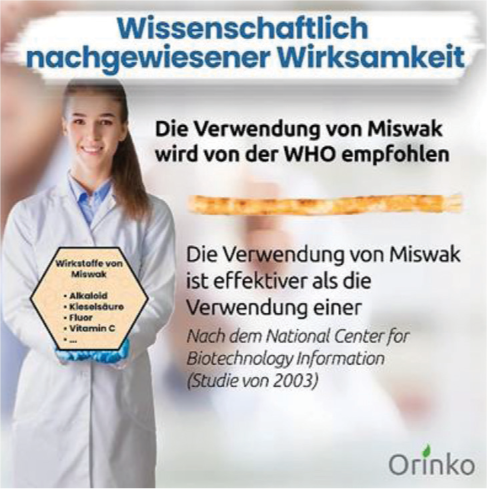A journey for oral health, WHO, World Global Oral Health Status, and the reality, Dr. Dietmar Klement, November 2023
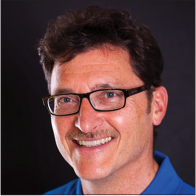

Ethiopia: Population of 109 million, four different ethnicities and languages. English is taught in schools and universities.
Dentists 175, dentist-patient ratio 1:287000! Dental faculties in the country are being established. One of them is the Addis Ababa University, Dental Medicine.
Income per capita: US$2,200/year.
Health expenditure: Annual per capita US$ 20.00.
One of the larger hospitals in the country with a dentist station, the Leprosy Hospital in Bisidimo, was built as a pilot project by the DAHW German Leprosy and Tuberculosis Aid in 1957. The hospital is located in Bisidimo, a small town approximately 20 km east of Harar. The pivotal point of active DAHW leprosy worked from the very beginning, 66 years ago. Fortunately, fewer and fewer people in Ethiopia affected by the biblical disease are flocking to Bisidimo. Since 1996, the DAHW has also been working to support people with tuberculosis. Detailed information about healthcare in Ethiopia can, among others, be found on Wikipedia: https://en.wikipedia.org/wiki/Healthcare_in_Ethiopia
Ohio State University, College of Dentistry Dean Patrick M. Lloyd, joined Ohio State’s global strategies team as well as deans and faculty from the university’s other health science colleges traveled to Addis Ababa University and the University of Gondar in Ethiopia with an eye toward developing mutually beneficial partnerships with their colleagues at these universities. The team’s approach is the foundation of the Ohio State University Health Sciences-Ethiopia “One Health Partnership” – a productive relationship.
The last visit at the University of Addis Ababa is dating 10 years back to June 2014. It will be interesting to research whether and what the effect is of the Ohio State University Health Sciences-Ethiopia “One Health Partnership” – whether it has contributed to statistically measurable improvement of the population or cohorts of it:

Global Strategy on Oral Health, 75th World Health Assembly, April 22nd as follow up to the political declaration of the third high-level meeting of the General Assembly on the prevention and control of non-communicable disease, recognizing the global public health importance of major oral diseases and conditions. In May 2021, the World Health Assembly adopted resolution WHA74.5 on oral health.
The WHO defines oral health as the state of the mouth, teeth, and orofacial structures that enable individuals to perform essential functions, such as eating, breathing, and speaking, and encompasses psychosocial dimensions, such as self-confidence, well-being, the ability to socialize and work without pain, discomfort, and embarrassment. Oral health varies over the life course from early life to old age, is integral to general health, and supports individuals in participating in society and achieving their potential. Globally, there were estimated to be more than 3.5 billion cases of oral diseases and other oral conditions in 2017, most of which are preventable. For the past three decades, the combined global prevalence of dental caries (tooth decay), periodontal (gum) disease, and tooth loss has remained unchanged at 45%, which is higher than the prevalence of any other non-communicable disease (NCD).
In reference to the Global Oral Health Report foreword, Dr Tedros Adhanom Ghebreyesus, Director-General, WHO, stated that oral diseases are among the most common NCDs worldwide, affecting an estimated 3.5 billion people. The burden is increasing, particularly in low- and middle-income countries.
Good oral health is essential for eating, breathing, and speaking and contributes to overall health, well-being, and confidence in interacting with others. However, oral health is challenged by a range of diseases and conditions, and stark and persistent inequalities in the burden of disease and access to oral health care. Disadvantaged and marginalized people are more likely to be at risk of oral diseases and their negative consequences. The good news is that many oral diseases can be prevented and treated. Cost-effective preventive and clinical interventions are available, together with approaches to tackle risks common to all NCDs, with the potential to be effective in a range of contexts, including low- and middle-income countries.
Oral health has long been neglected in the global health agenda. Our biggest challenge now is ensuring that all people, wherever they live and whatever their income, have the knowledge and tools needed to look after their teeth and mouths and access to prevention and care when they need it. For this to happen, all countries need sufficient staff trained in oral health, and oral health services must be included in national health coverage packages, either free of charge or at a price that people can afford. The adoption by the WHO member states of a historic resolution on oral health at the World Health Assembly in 2021 was an important step forward. The development and adoption of a comprehensive Global Strategy on Oral Health, with a bold vision for universal coverage of oral health services by 2030, was another milestone. The Global Oral Health Action Plan to be discussed in 2023 will include a monitoring framework with clear targets to be achieved by 2030. These policies will provide us with a clear path toward ensuring oral health for all.
This WHO Global Oral Health Status Report provides a comprehensive picture of the oral disease burden, the resources available for oral health, and the challenges ahead.
The report also includes country profiles and will serve as a baseline for tracking progress. Integrating oral health promotion and care into primary health care and UHC benefit packages will be key to success. The WHO is committed to providing guidance and support to countries to help make this happen.
I am confident that this report will contribute to continued and increased efforts to improve oral health globally so that no one is left behind with preventable and treatable oral diseases through the pilot project and the oral prophylaxis model for aid mission projects. Neither the declaration nor the Global Oral Health Report refer to the structural requirements, number of dentists, or necessary financial resources to achieve these described goals. In the majority of non-industrialized countries, state-supported and organized social systems are missing or are limited to non-oral disease. Purpose and goal of the trip to Ethiopia, Bisidimo included the pilot project for environmental premises and necessities under practical, structural, and social conditions. Usable statistical data would be obtained through record of comprehensible facts about changes and behavior of the population in oral health. At the same time, for the local public through print and TV channels, greater awareness and promotion of oral health should be achieved socioeconomically, particularly by involving the institutions responsible for the schools.
There should not be any obvious discrepancy between the data developed by the WHO and the FDI as global professional organizations and this should be achieved through adequate training of support staff and financial support along with new thought processes. Statistically documented measurable improvement can be obtained through planning documentation, sustainability and standardized treatment protocols. This approach would ultimately result in the much required improvement in overall oral health status.
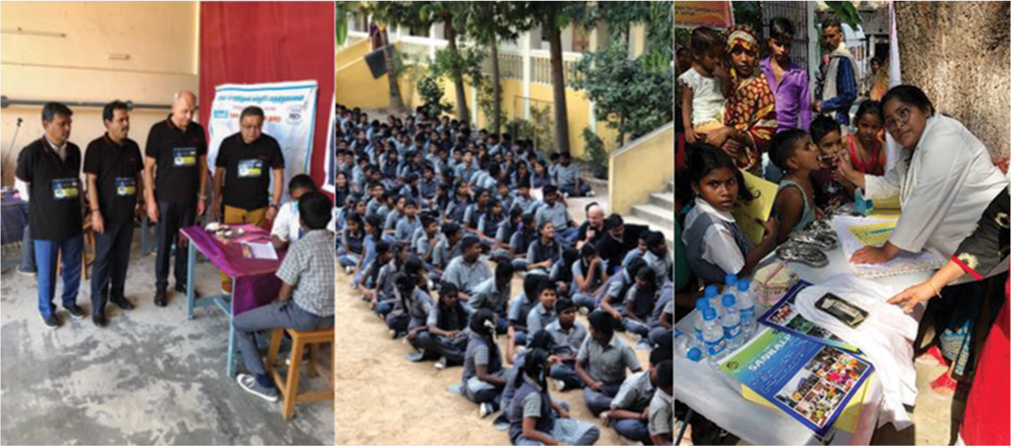
It is in the nature of things that the majority of philanthropically oriented aid organization members sacrifice quality of life doing excellent work in the mostly desperately poor countries. Their experience on-site and their reports for improving living conditions often goes unnoticed due to lack of formal collection of data. Mistakes made by previous missions can be avoided by subsequent missions if this data is collected using set protocols.
The experience of such mission aid projects through sustained funding of 5 years or more must be collected to help further mission projects. Such data should be collected by mostly younger and highly motivated dental colleagues. This enriches professional, technical as well as private life improvements.
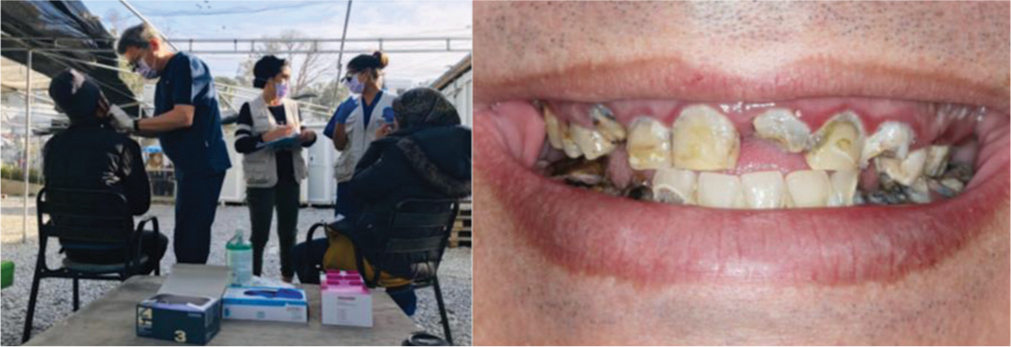
Part of the protocol for considerations when preparing for a mission is to take into account the often-simplest conditions for treatment on-site, clean water resources, for patients and equipment sterilizer, often not even a “pressure cooker is or a patient chair and dental unit.” Patients often present with pronounced dental phobia. In Bisidimo, the conditions for a proper anamnesis and diagnosis are fortunately met although a new simple setup is urgently needed.
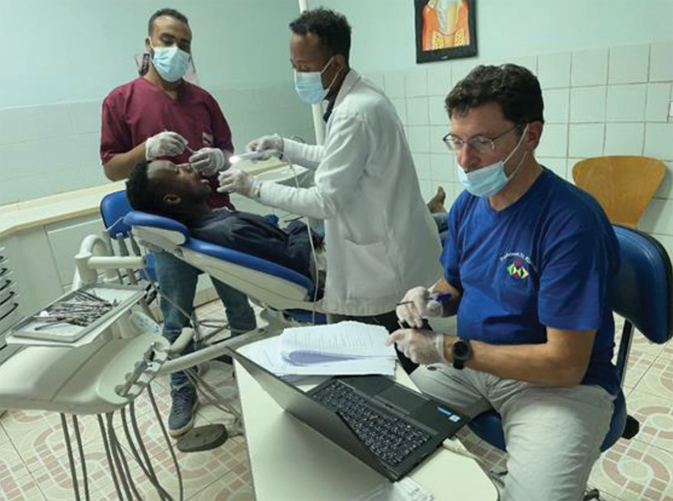
An important prequisite towards rethinking and improving aid missions is to document oral health status and achievements using an intraoral oral camera and Windows notebook or android tablet using the appropriate software to capture the oral conditions. For the model aid organization treatment and result protocol, Planmeca Finland provided 2 Somia intraoral cameras and the software AMI e.V., a Windows notebook.
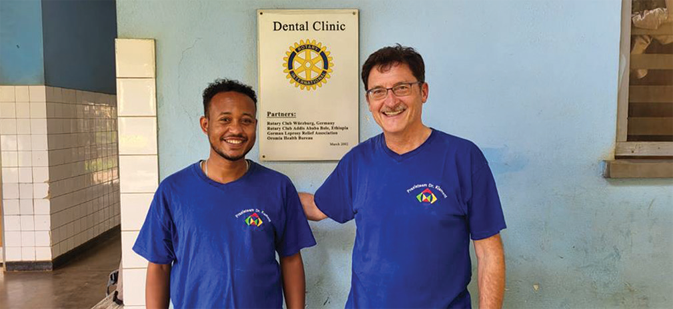
AMI e.V.’s goal for a sustainable oral hygiene program for children and young people was developed at the beginning of November 2023. As a first step, Dr. Dietmar Klement, practicing in Würzburg, worked with the local dentist, Dr. Eliyas Mohammed.
During our Nov 2023 mission to Bisidimo, there were a total of 25 patients. The age range of patients was from 16-20 and the following data was collected for each patient:
Existing teeth
Carious defects
Plaque/tartar
Tooth discoloration
Periodontal conditions.
At the same time, patients had to answer these questions:
Eating habits
Sugar consumption
To chew bubble gum
Dental care: Yes/no, with what, how often.
After discussions with the patients, conclusions were made between dental findings, tooth brushing habits and dietary habits of this population in rural East Africa. Listed below is the data obtained.
All students eat sugar-free food (vegetables, millet porridge)
50% of men and 66% of women eat snacks containing sugar
30% of men and 20% of women use toothbrushes, the rest miswak –rod
Women have eight teeth with fissures and caries, men have no caries (fluorosis?)
All men presented with plaque/tartar, mottled enamel (fluorosis?) and gingivitis
Women had 80% plaque/tartar, 40% mottled enamel, 50% gingivitis
60% of women chew gum, 30% of men
Almost all of the students were missing their wisdom teeth.
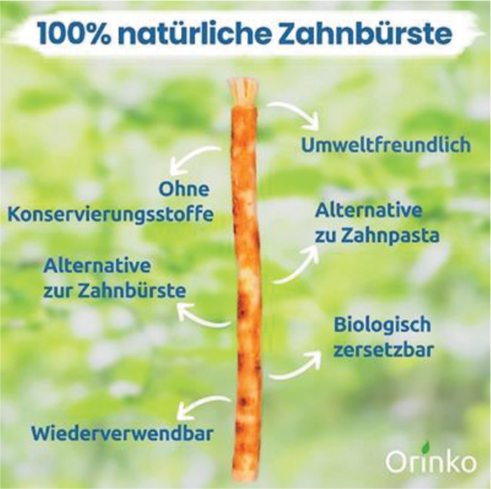
The increased incidence of caries in women is presumably due to higher sugar consumption. Among the men, there was greater fluorosis and gingivitis due to lack of interdental space care. In preschool children, there was a 50% increase in carious teeth with increased sugar consumption and associated lack of dental care. A lower incidence of dental diseases can be achieved through dental care. People in the Bisidimo area still commonly using 100% natural Miswack Tree brushes. Their efficacy is not scientifically documented; another example is the need to consider local customs and modes for drafting an aid mission treatment protocol.
